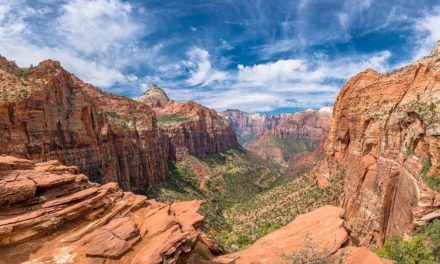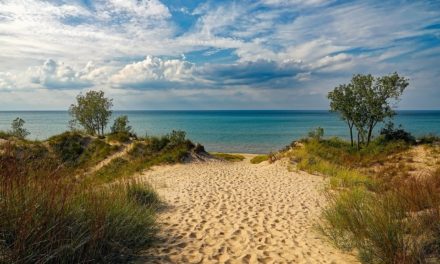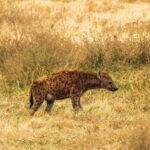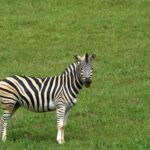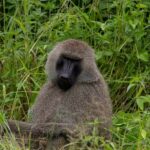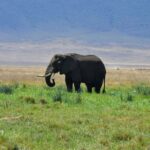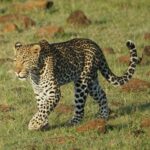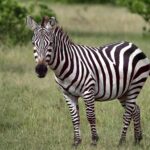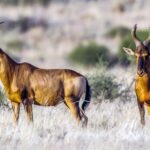Table of Contents
Overview / About
Olympic National Park, located in northwestern Washington State, is a land of remarkable contrasts from misty temperate rainforests and glacier-capped mountains to rugged Pacific coastlines. Established in 1938 and designated a UNESCO World Heritage Site and International Biosphere Reserve, the park spans nearly 922,000 acres across the Olympic Peninsula.
Its diversity is unmatched you can walk through moss-draped forests in the morning, hike among alpine wildflowers by noon, and watch the sunset over tidepools by evening. Olympic preserves some of the most pristine wilderness in the United States, where nature still shapes the land freely.
Wildlife & Nature
Olympic’s unique ecosystems create a haven for plants and animals found nowhere else on Earth.
Key Wildlife:
- Roosevelt elk, black bears, cougars, mountain goats, bobcats, and river otters roam the forests and mountains.
- Marine life includes sea otters, harbor seals, gray whales, and orcas along the coast.
- Bird species like bald eagles, marbled murrelets, and pileated woodpeckers fill the skies and canopies.
Habitats:
- Hoh Rainforest & Quinault Rainforest: Dense, lush, and dripping with mosses, ferns, and centuries-old spruce and hemlock.
- Alpine Zone: The glacier-carved Olympic Mountains, crowned by Mount Olympus (7,980 ft), dominate the heart of the park.
- Coastline: 73 miles of wild Pacific shores at Rialto Beach, Ruby Beach, and Shi Shi Beach where sea stacks rise dramatically from the surf.
Experiences & Activities
Olympic offers endless opportunities for exploration across its varied landscapes.
Hiking & Backpacking:
- Hoh Rainforest Trail: Easy walks under towering mossy trees.
- Hurricane Ridge: Panoramic mountain views and wildflower meadows.
- Sol Duc Falls Trail: A short, scenic route to a stunning waterfall.
- Enchanted Valley Trail: Known as the “Valley of 10,000 Waterfalls” a paradise for backpackers.
- Coastal Trails: Multi-day treks along beaches lined with driftwood and tidepools.
Water Adventures:
- Kayaking & Canoeing: On Lake Crescent or along the coastal waters.
- Fishing: Both freshwater and saltwater fishing are popular with proper permits.
- Hot Springs: Relax at Sol Duc Hot Springs Resort after a day of hiking.
Winter Activities:
- Snowshoeing and skiing are popular near Hurricane Ridge in winter months.
Photography & Wildlife Viewing:
- Capture bald eagles, misty rainforests, and rugged coasts at sunrise or sunset.
Best Time to Visit
Olympic is open year-round, but each season offers a different experience.
- Summer (June–September): Best weather, open trails, and accessible mountain roads.
- Fall (October–November): Fewer visitors, golden forests, and great photography conditions.
- Winter (December–February): Snowy peaks and skiing at Hurricane Ridge; coastal storms are dramatic.
- Spring (March–May): Waterfalls peak and wildflowers bloom in lower valleys.
How to Reach & Park Entry
Location: On Washington’s Olympic Peninsula, about 80 miles west of Seattle.
By Road:
- Access via U.S. Highway 101, which loops around the park.
- Major entrances include Port Angeles, Hoh Rainforest, Lake Quinault, and Kalaloch.
By Air:
- Seattle–Tacoma International Airport (SEA) is the closest major airport.
- Rental cars and ferries from Seattle provide access to the peninsula.
Park Entry Fees:
- $30 per vehicle (valid for 7 days)
- Annual pass: $55
Where to Stay / Camping Options
Lodges & Cabins:
- Lake Crescent Lodge: Historic lodge with lakeside charm.
- Kalaloch Lodge: Coastal views and cozy cabins near the beach.
- Sol Duc Hot Springs Resort: Offers both cabins and natural mineral pools.
Campgrounds:
- Hoh Campground: Among rainforest trees very popular.
- Kalaloch Campground: Overlooks the Pacific Ocean.
- Heart O’ the Hills Campground: Near Hurricane Ridge, ideal for families.
Backcountry Camping:
- Permits required for overnight wilderness trips.
- Coastal camping on beaches like Shi Shi or Ozette Loop offers unforgettable experiences.
- Nearby Towns: Port Angeles and Forks provide hotels, motels, and dining options.
Travel Tips / Safety Notes
- Dress in layers weather can shift quickly between coast, forest, and mountains.
- Rain gear is essential year-round, especially in the rainforest.
- Stay on marked trails to protect delicate mosses and vegetation.
- Carry bear spray and secure food properly.
- Tide schedules are crucial for coastal hikes rising tides can cut off routes.
- Book accommodations early during summer months.
Packing List
- Waterproof hiking boots and rain jacket
- Warm fleece or light down jacket
- Hat, gloves, and quick-dry layers
- Refillable water bottle and snacks
- Map, compass, and flashlight
- Binoculars and camera
- Insect repellent and sunscreen
- Bear-safe food containers (for backcountry)
Visitor Statistics
Olympic National Park attracts around 2.5 to 3 million visitors annually, making it one of the most visited parks in the U.S. The most popular areas include Hurricane Ridge, Hoh Rainforest, and Rialto Beach. Despite its popularity, many trails and valleys still offer solitude and silence.
Conservation & Responsible Tourism
Olympic National Park protects some of the world’s last temperate rainforests and vital coastal ecosystems. Threats like climate change, glacial retreat, and invasive species are closely monitored by park scientists.
Visitors can help by:
- Using reusable bottles and avoiding single-use plastics.
- Staying on marked paths to prevent erosion.
- Respecting wildlife viewing distances.
- Supporting local communities around Forks and Port Angeles.
Olympic National Park stands as a living reminder of Earth’s raw beauty where rainforests breathe, glaciers glisten, and the ocean roars endlessly against ancient cliffs.


